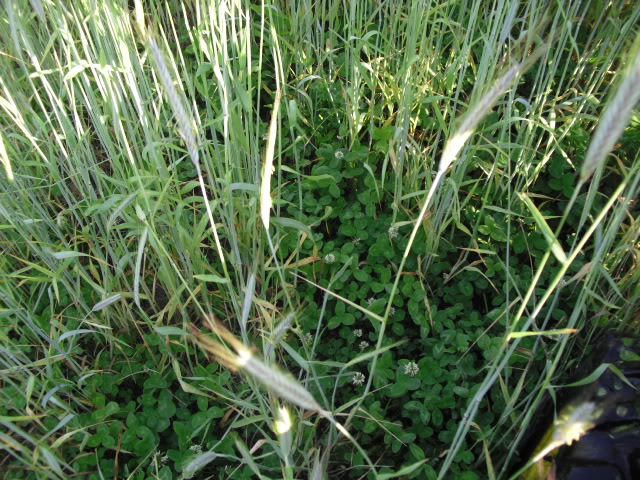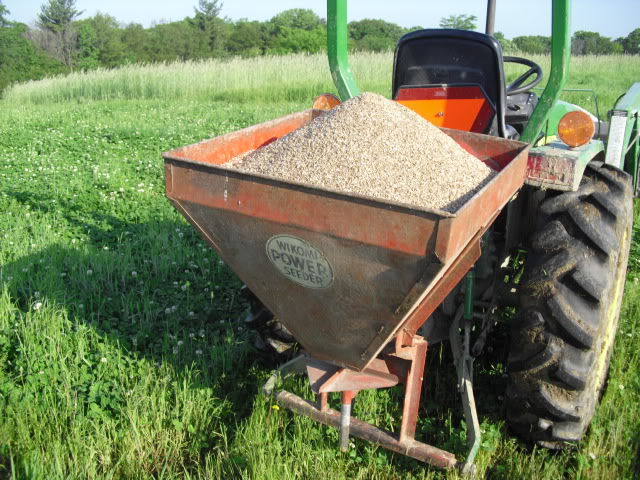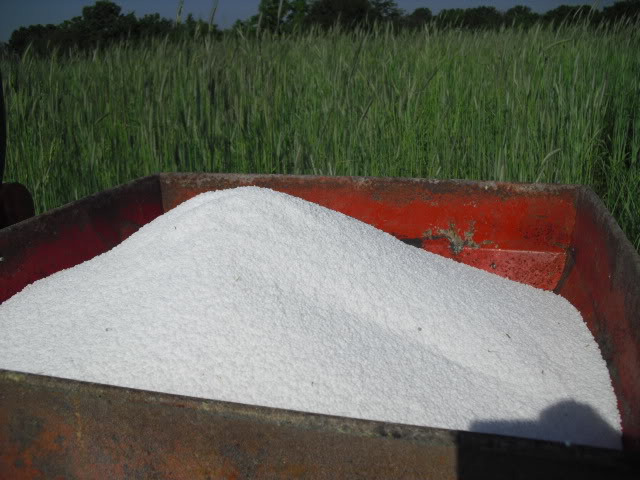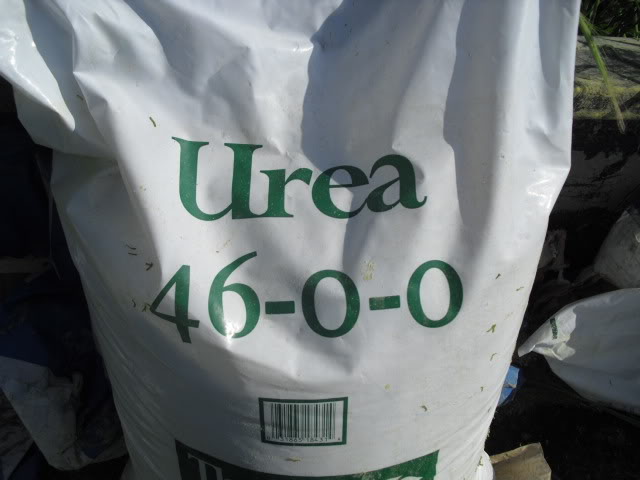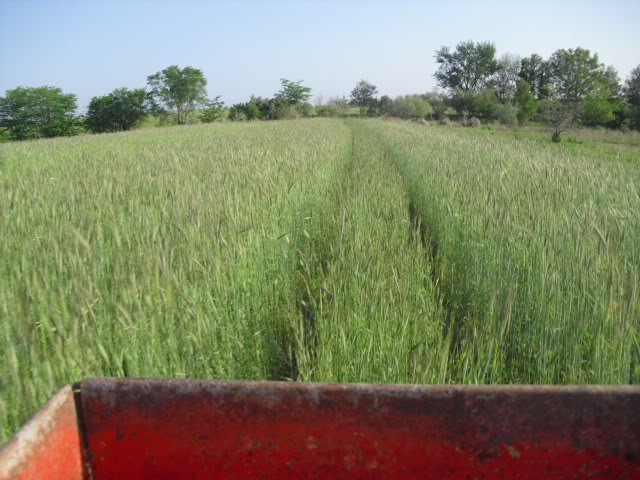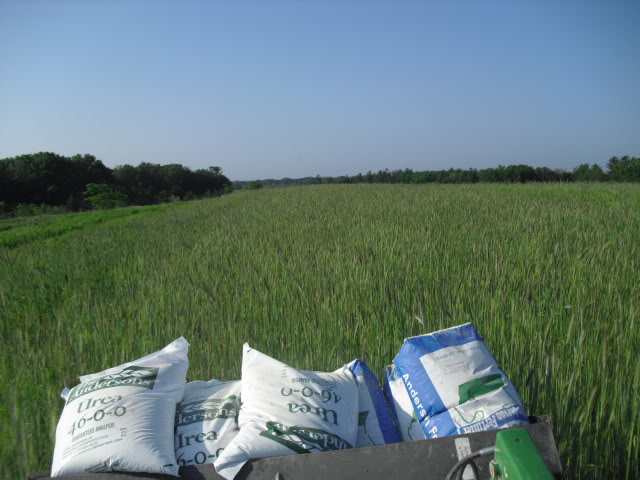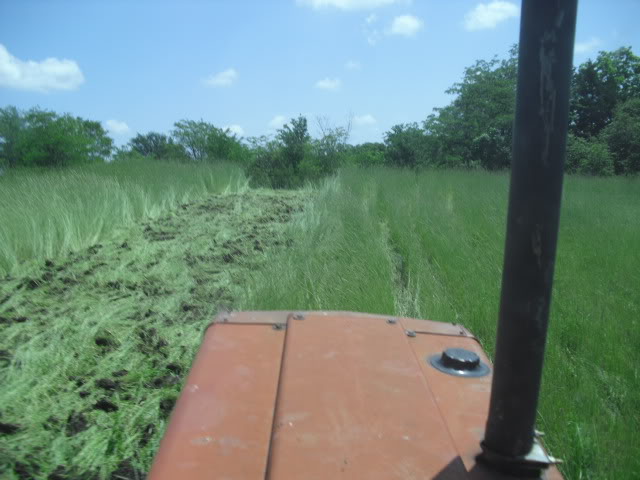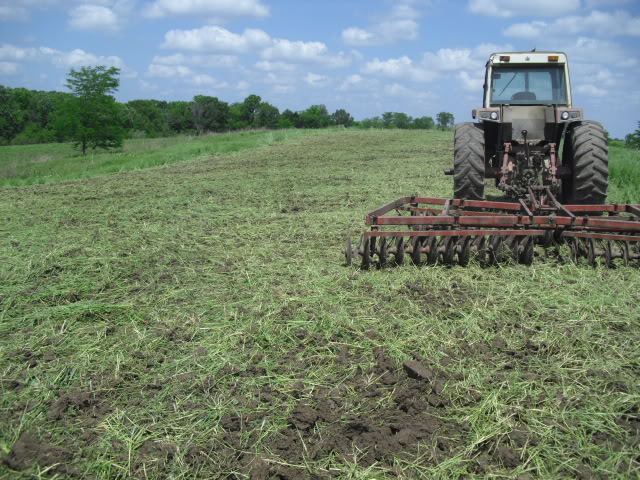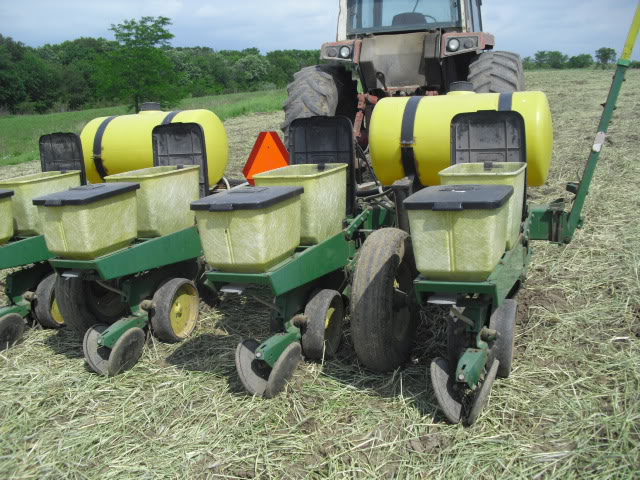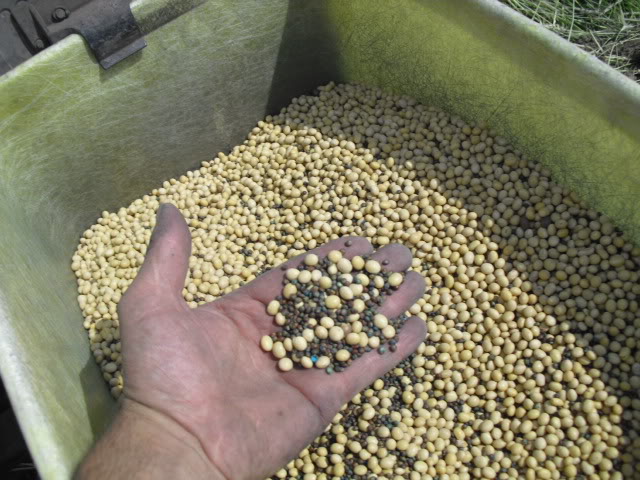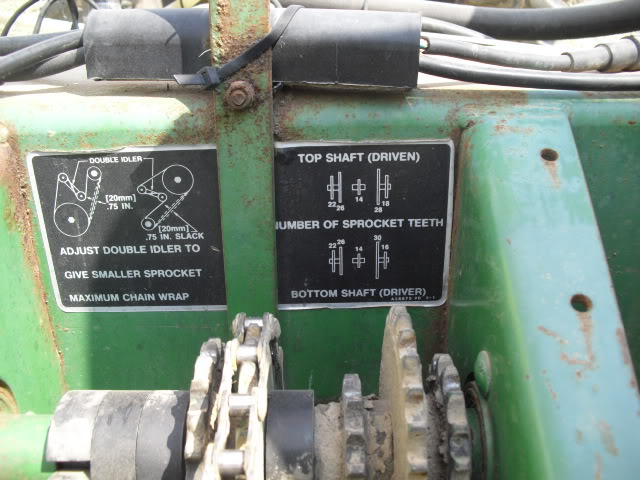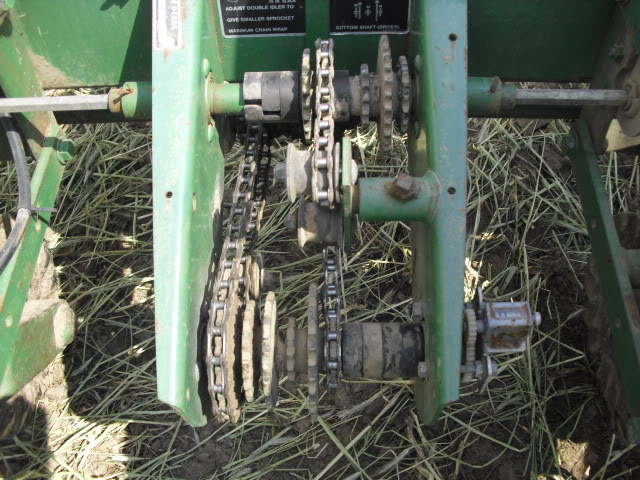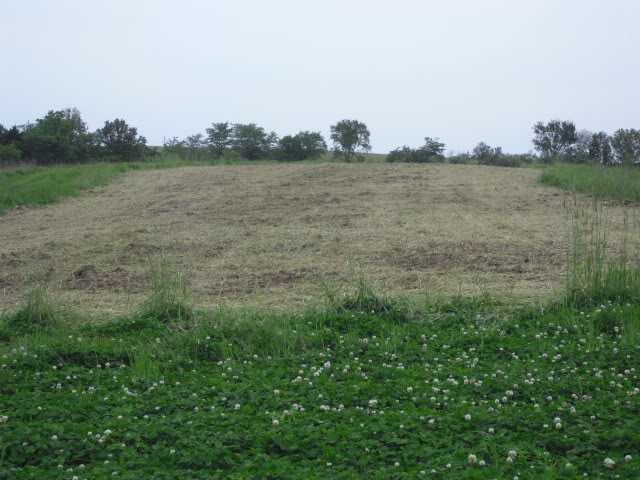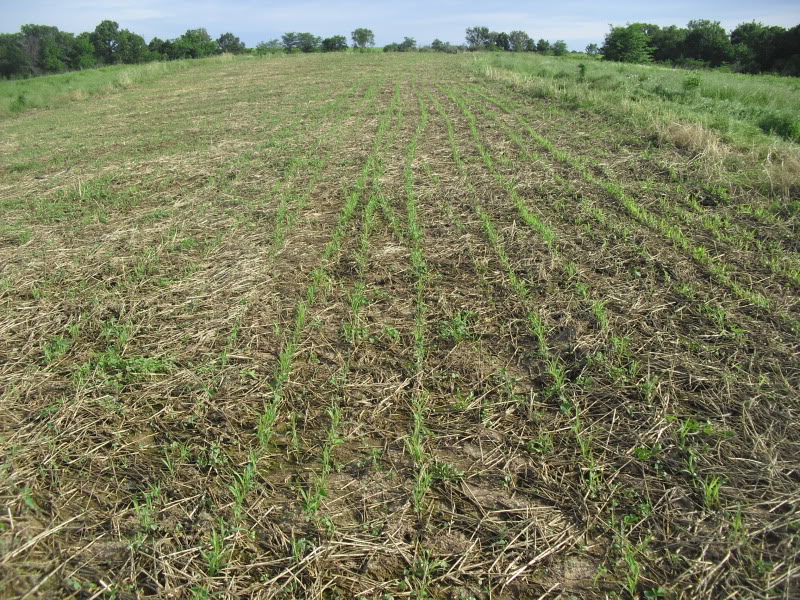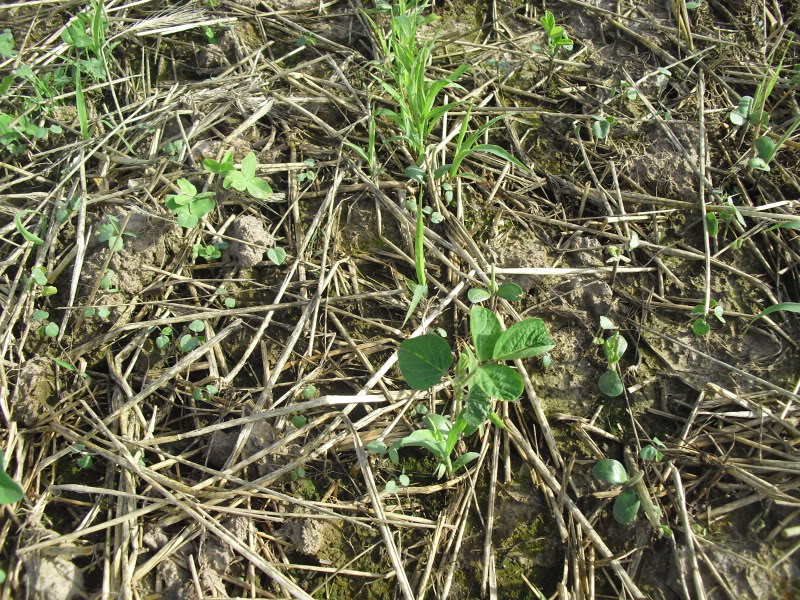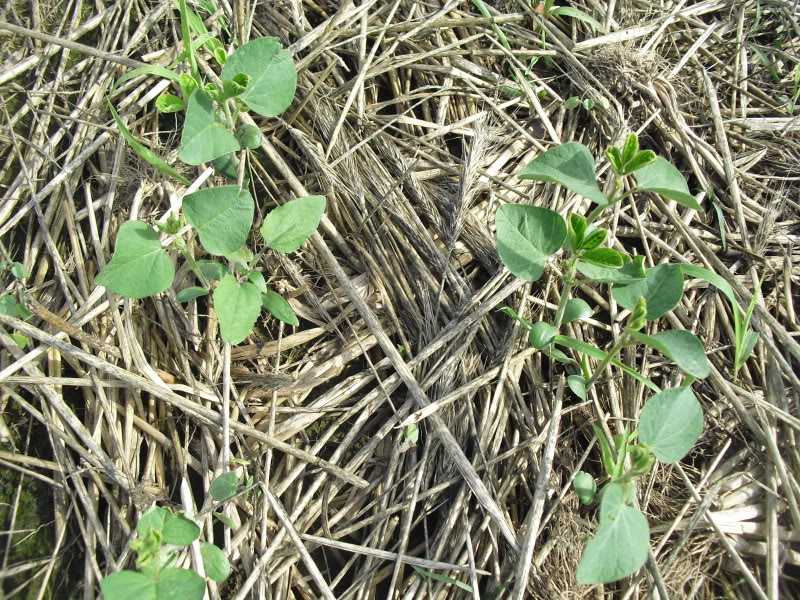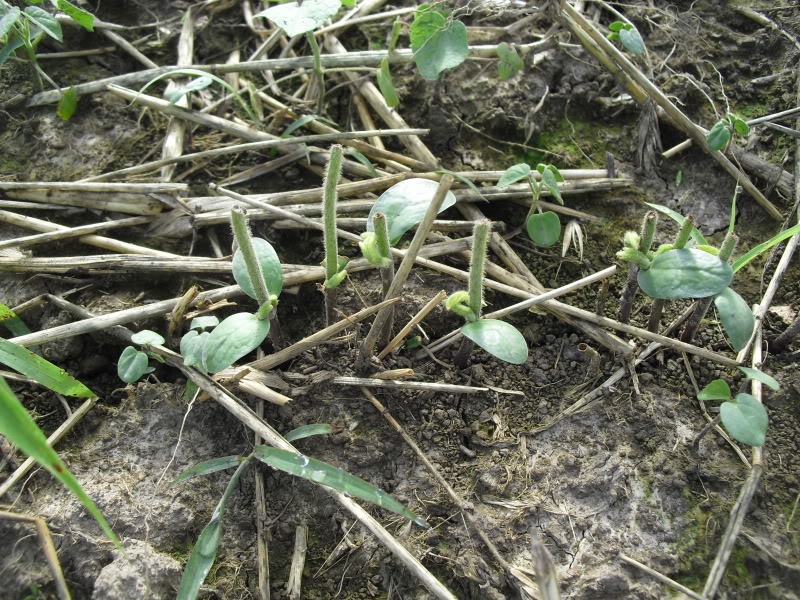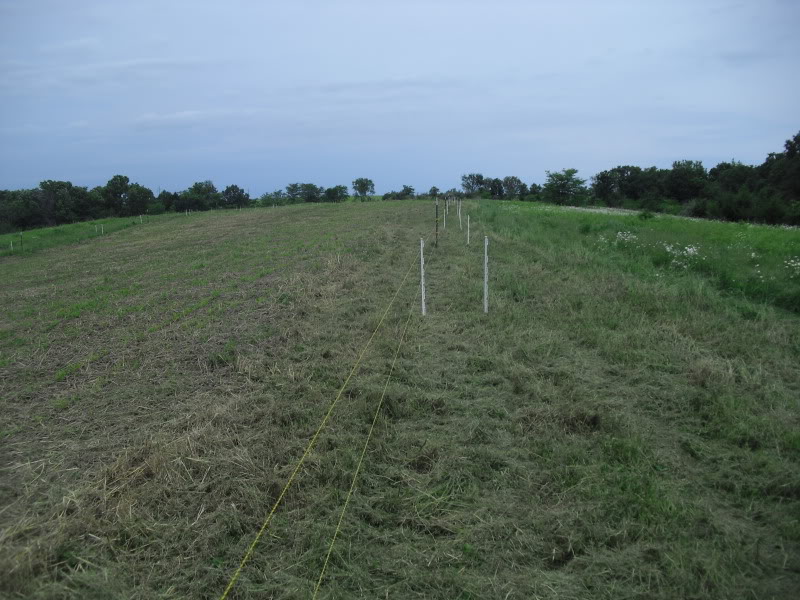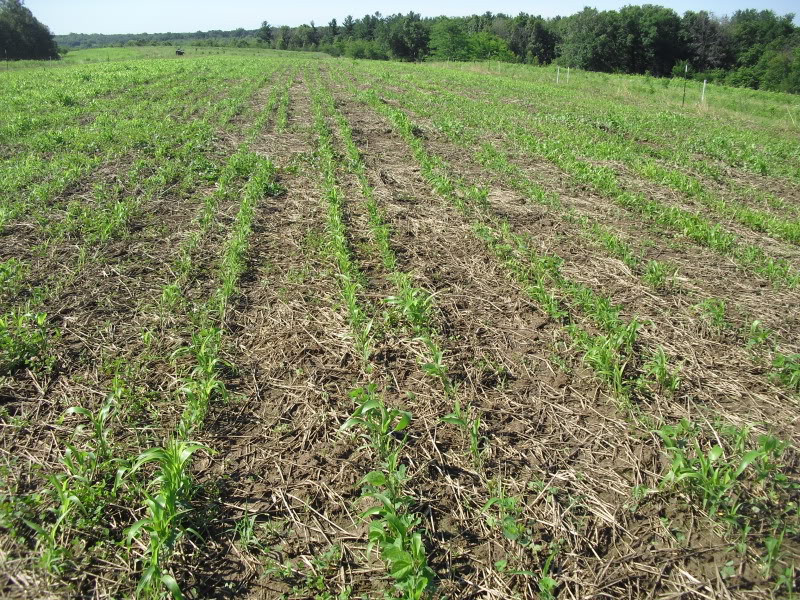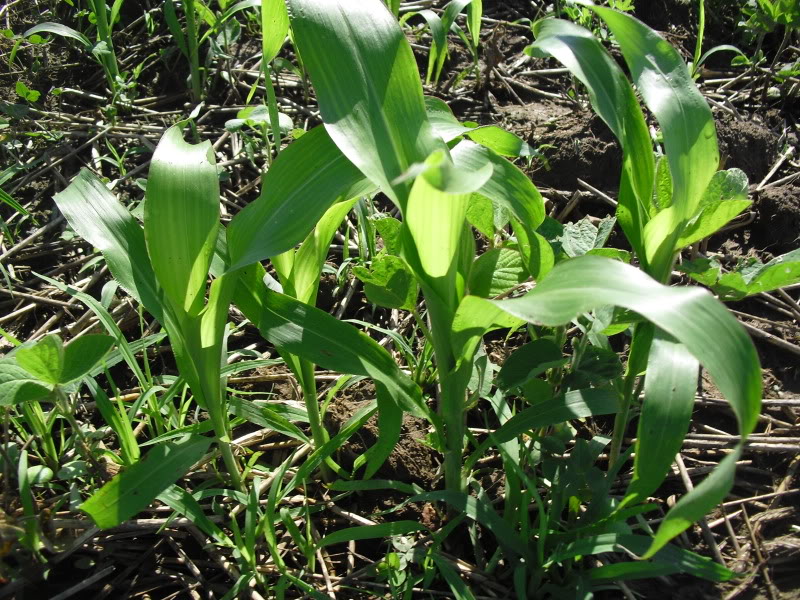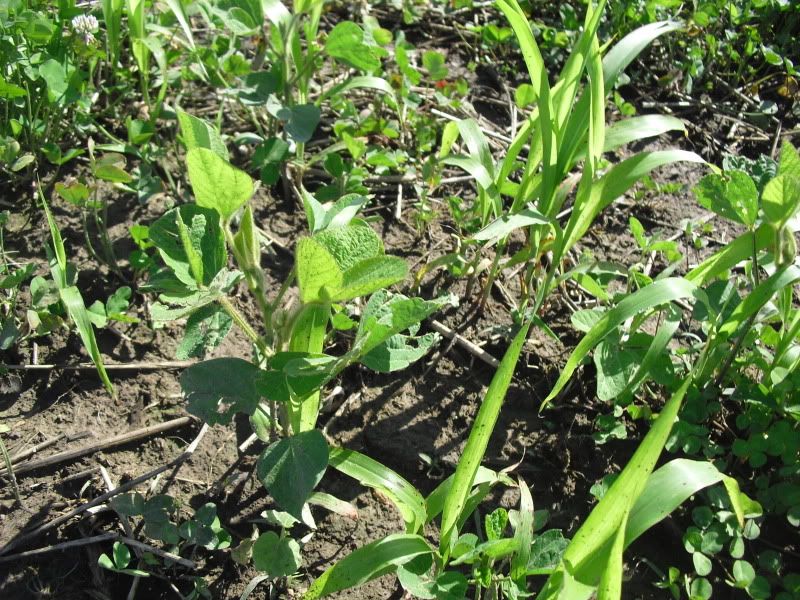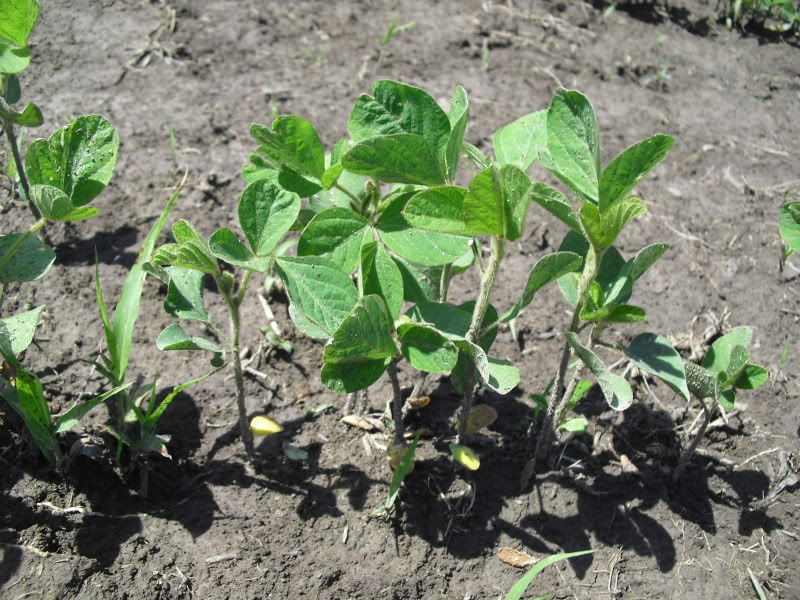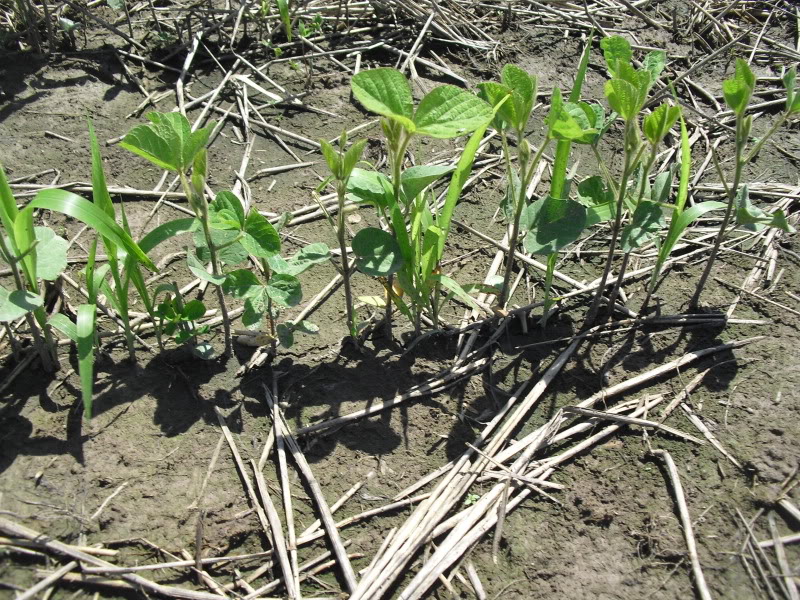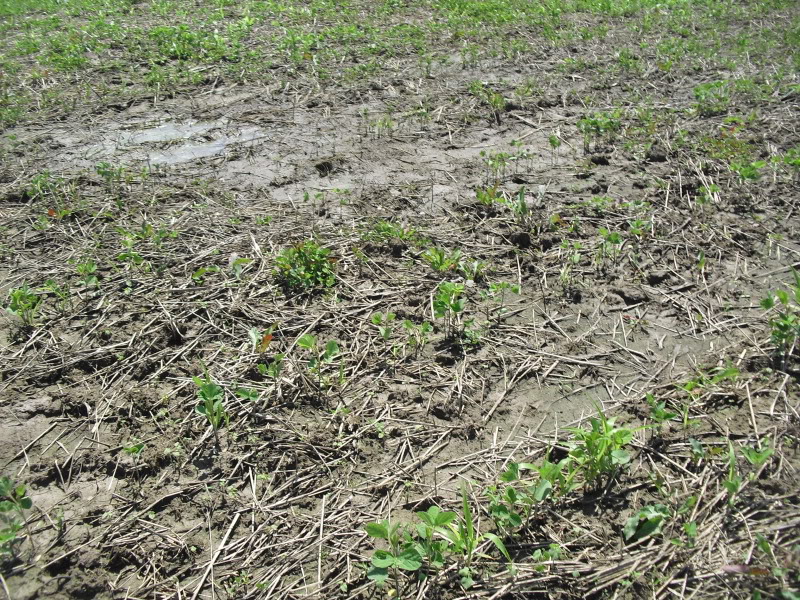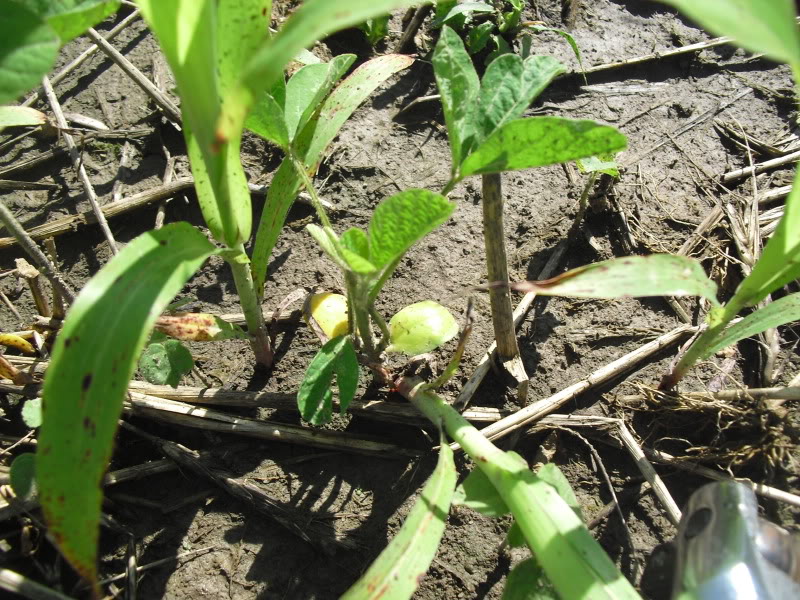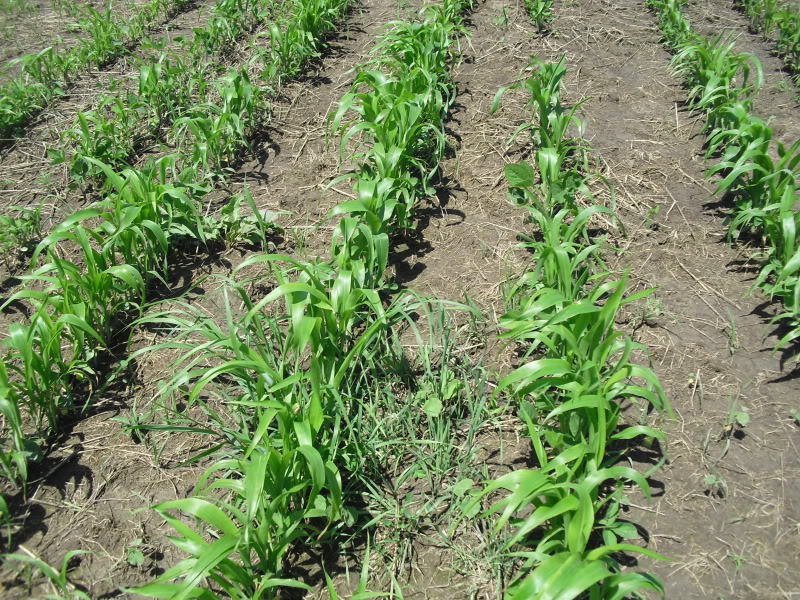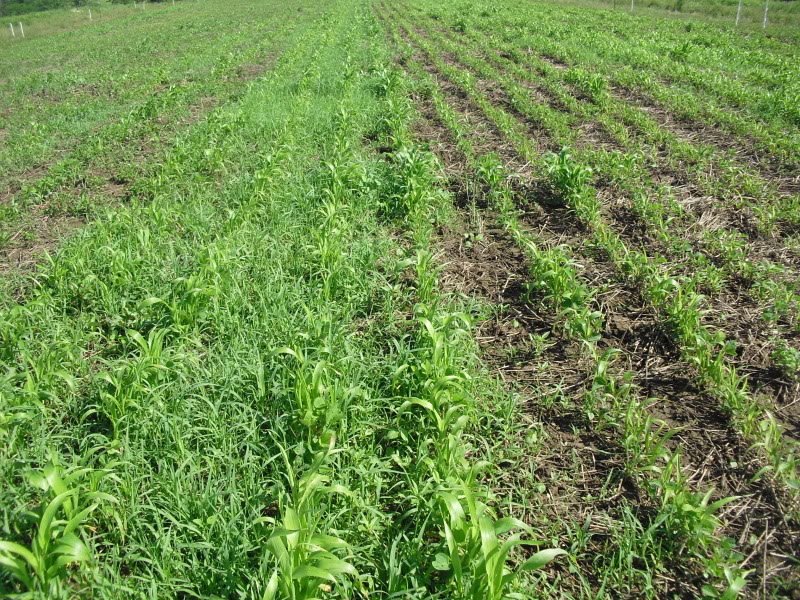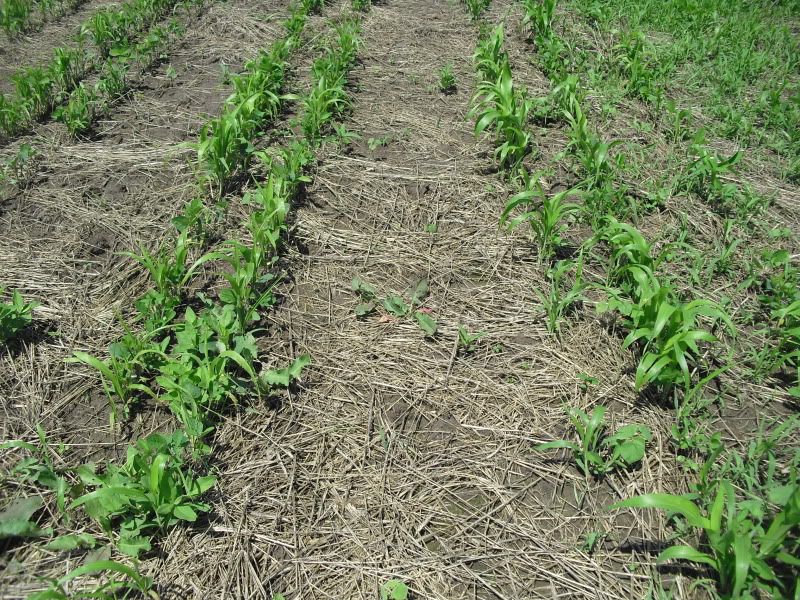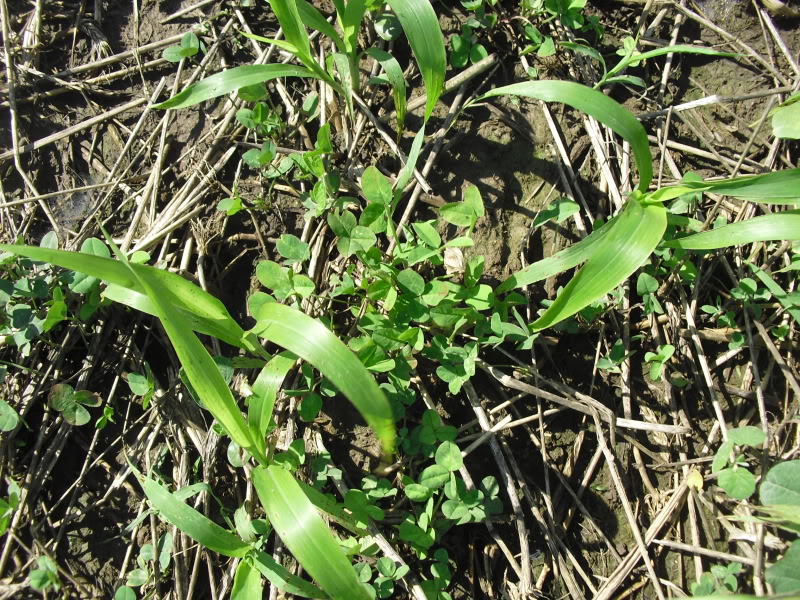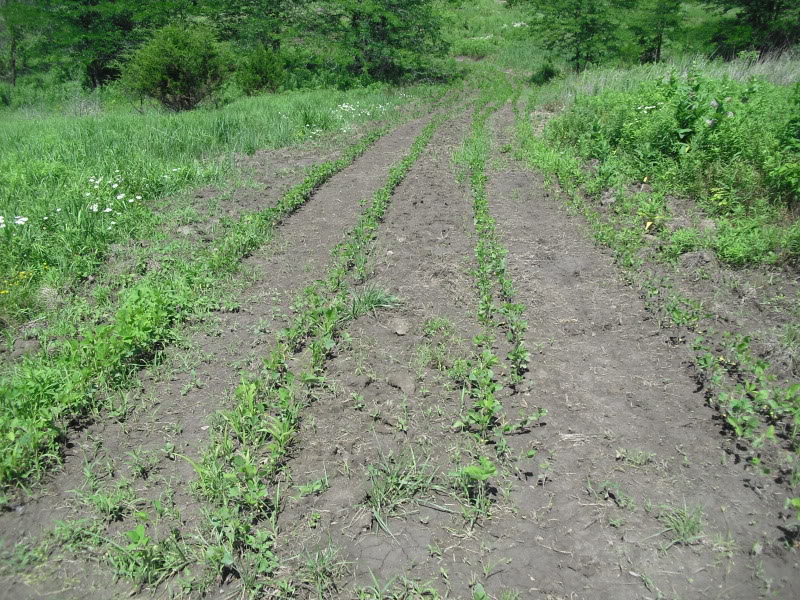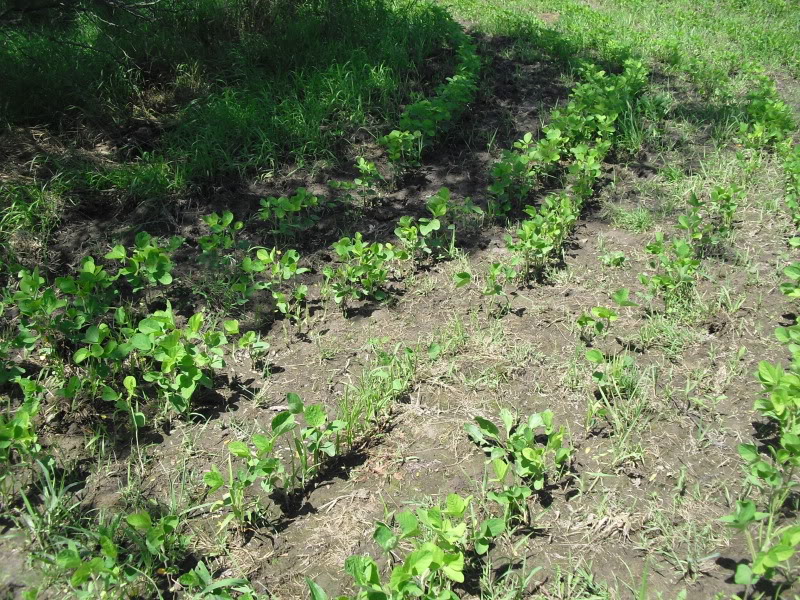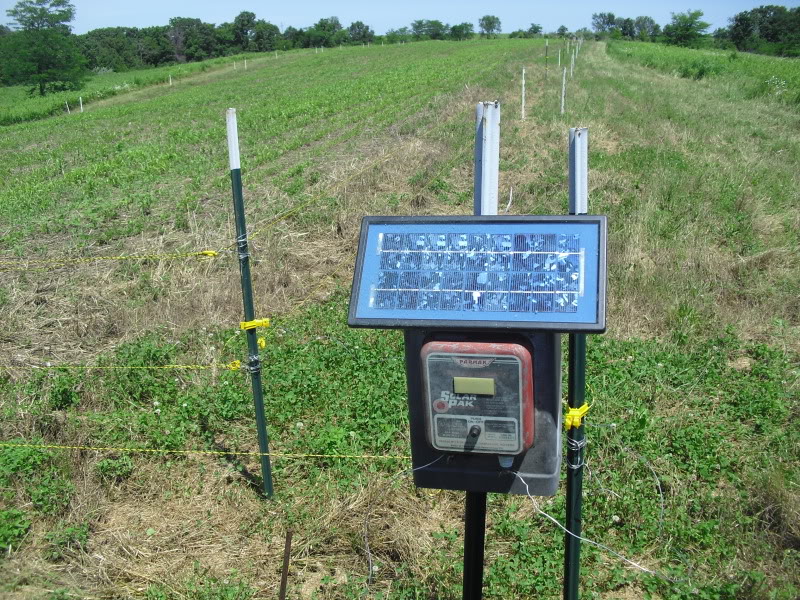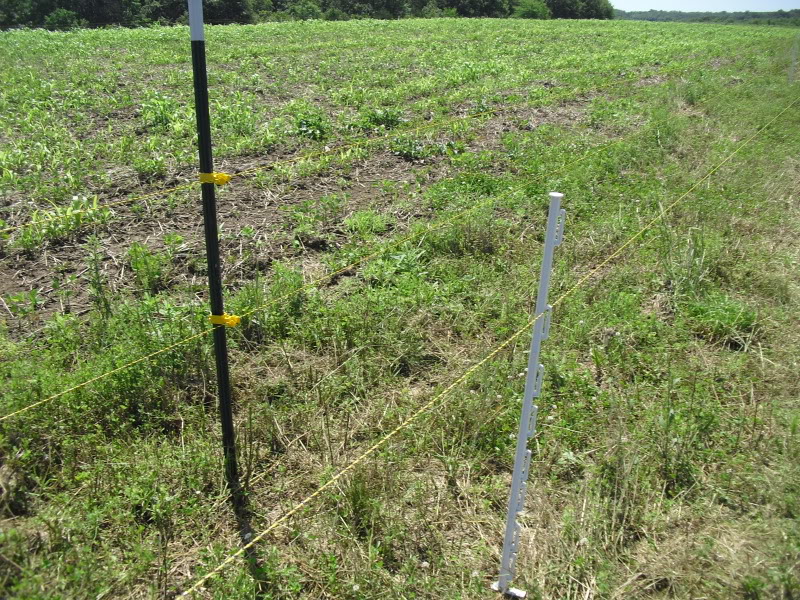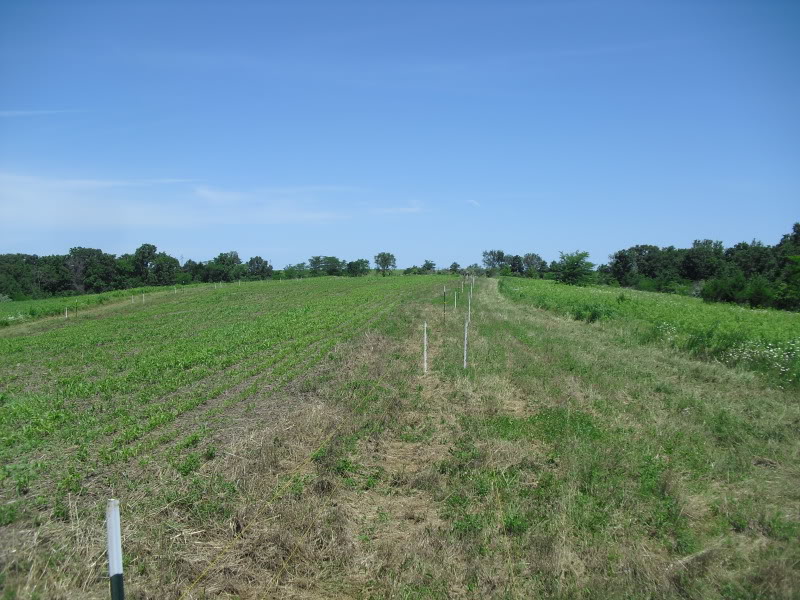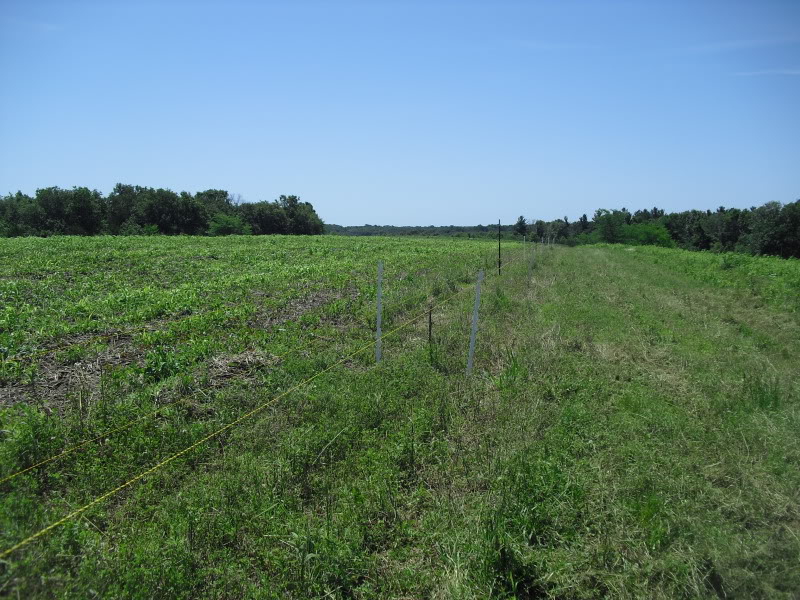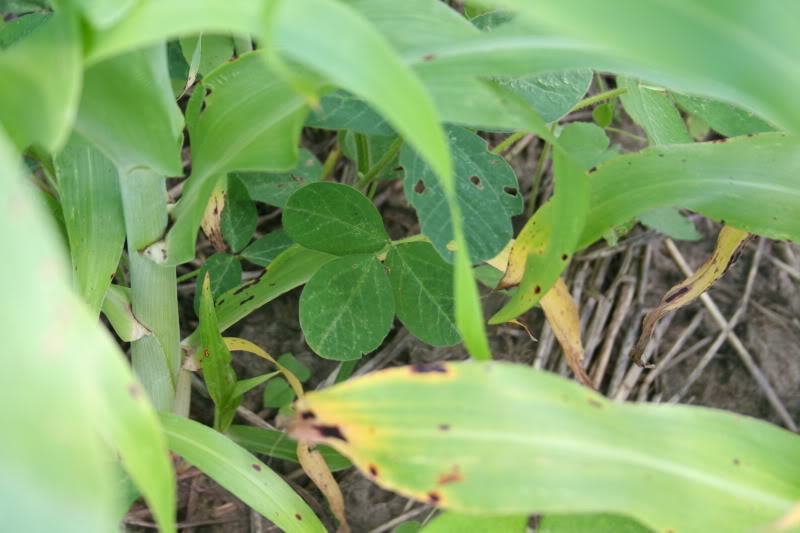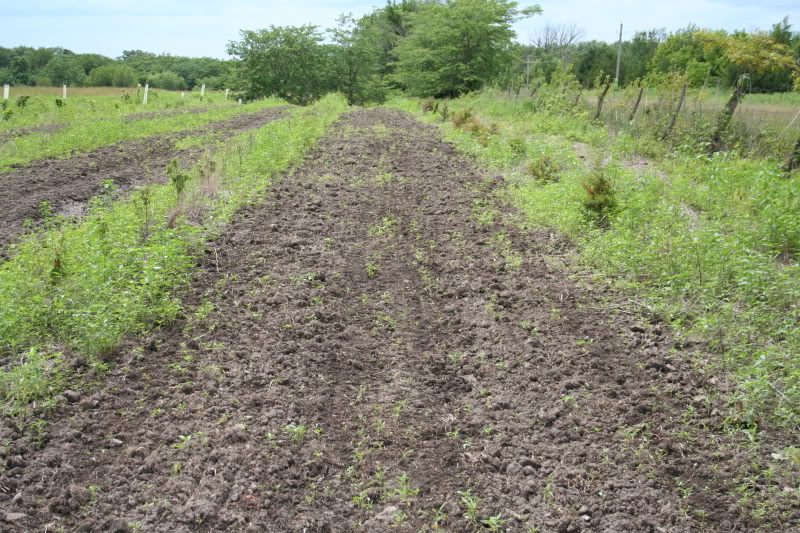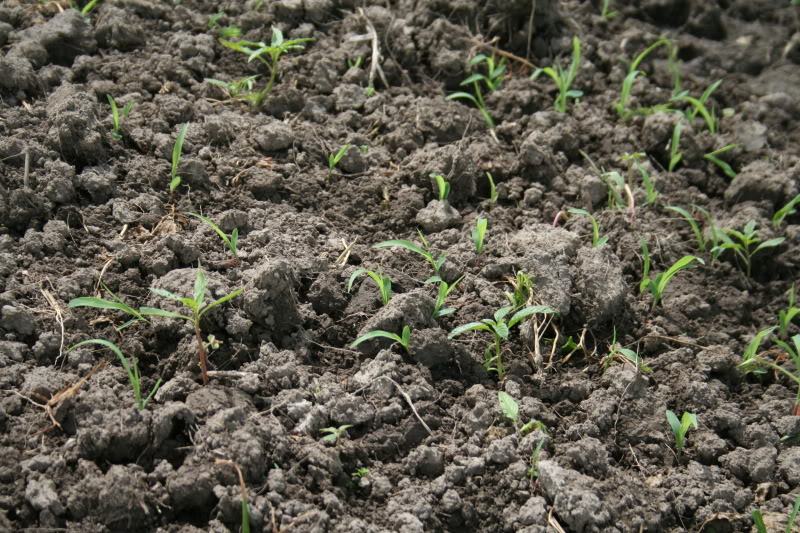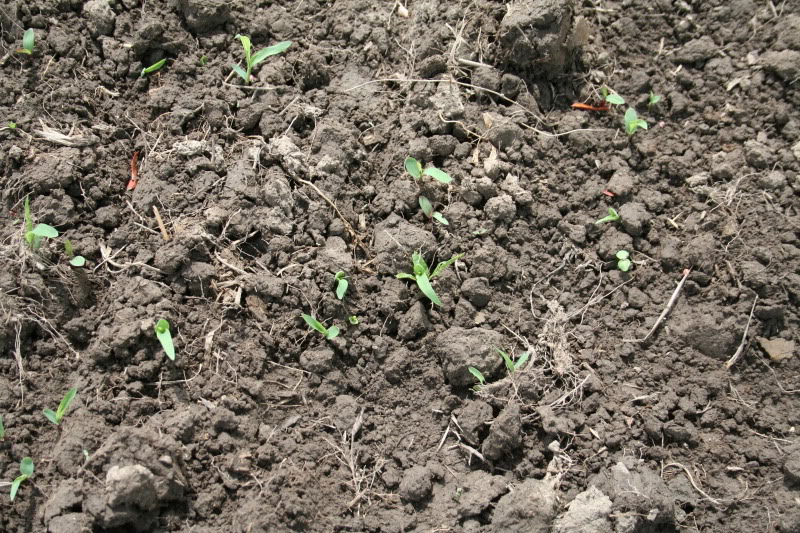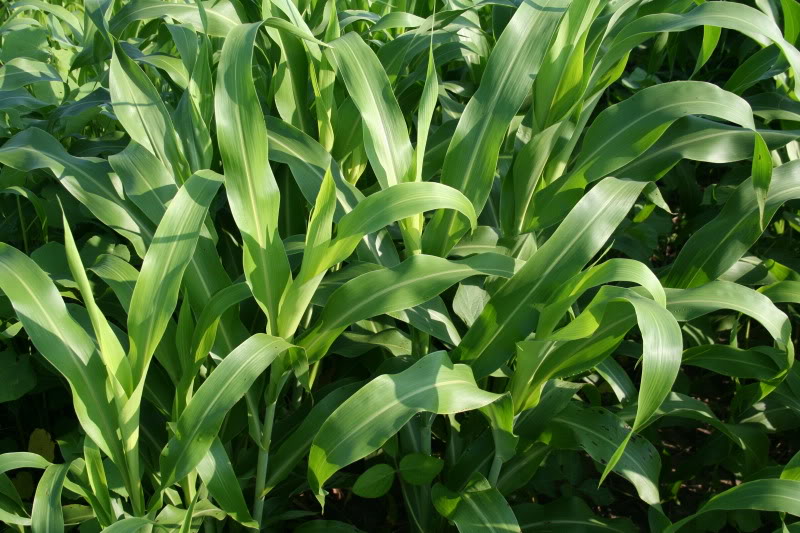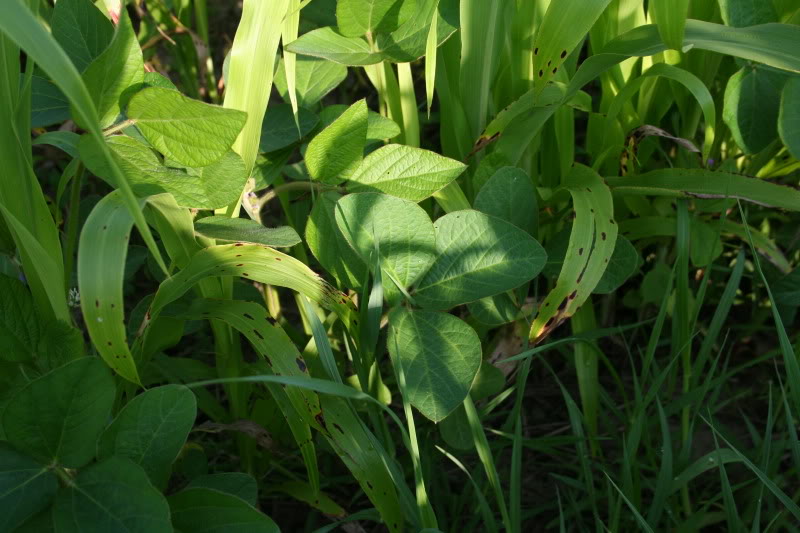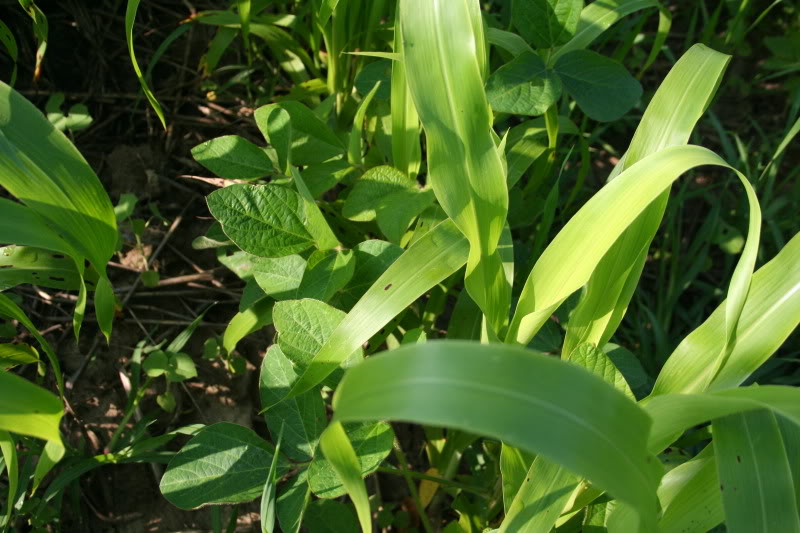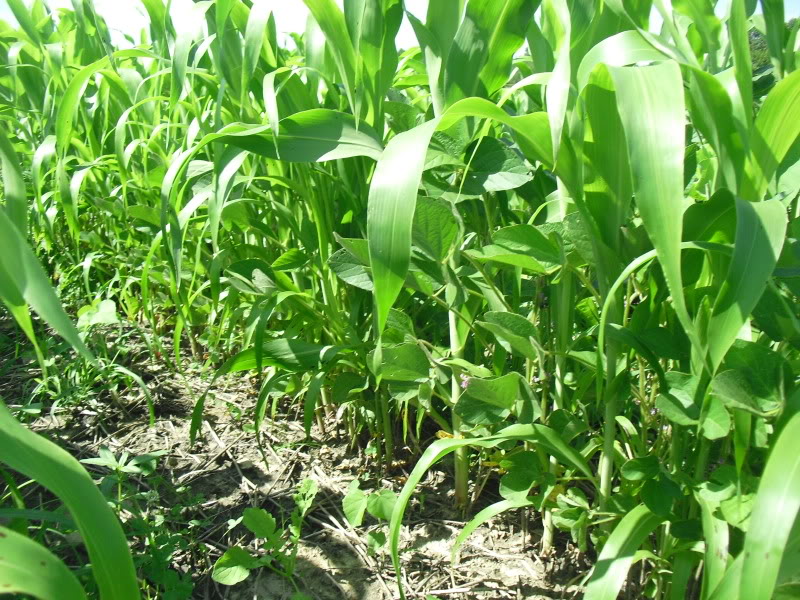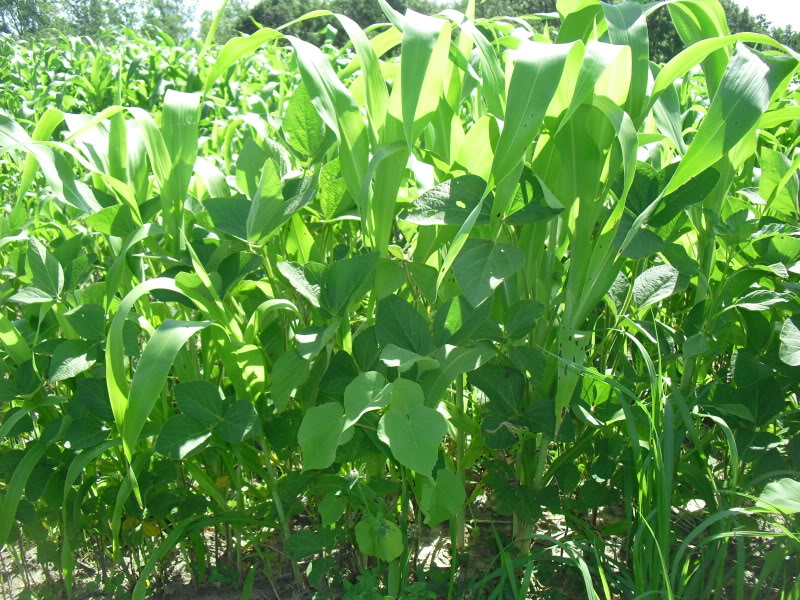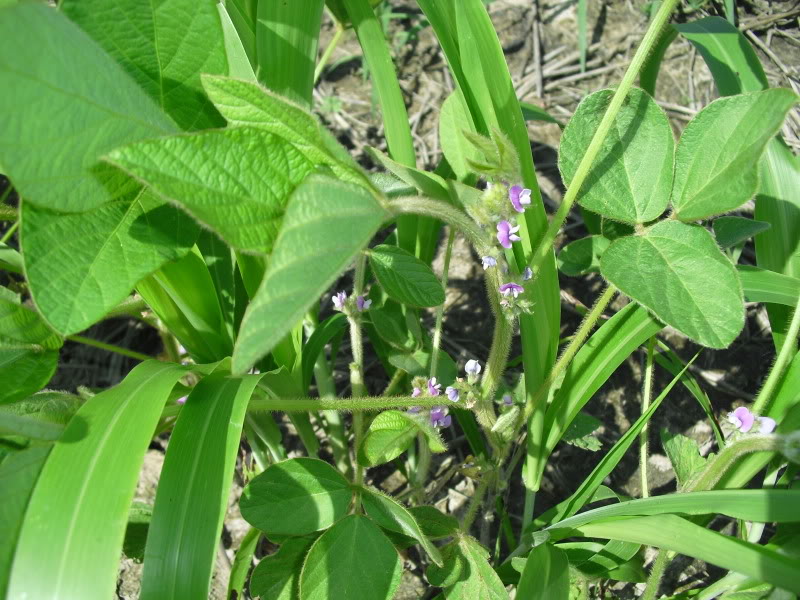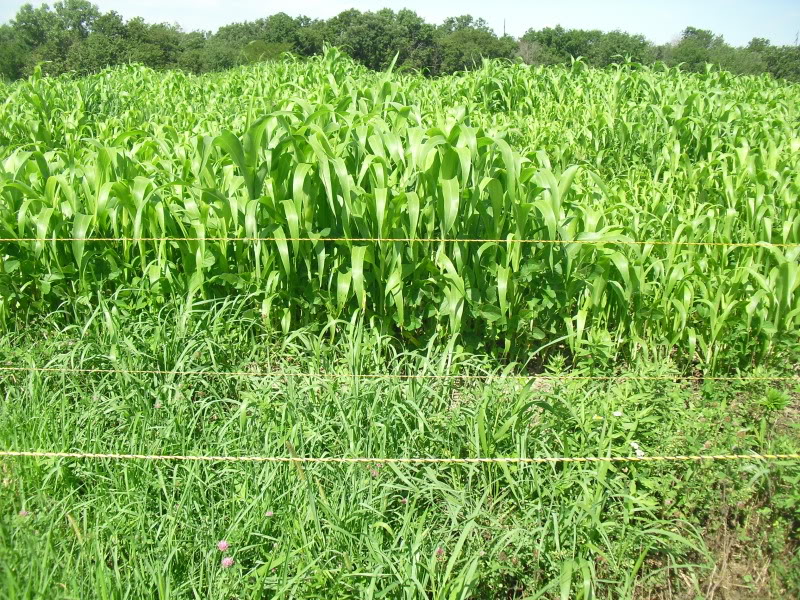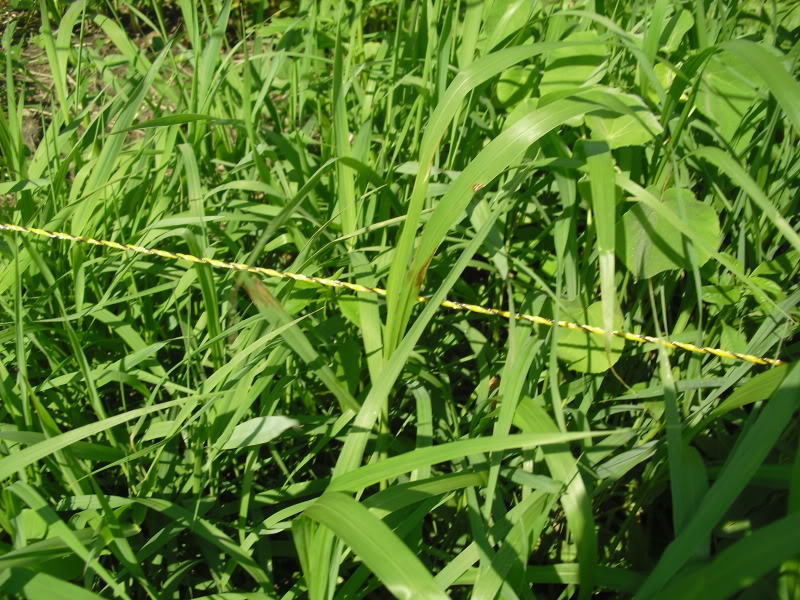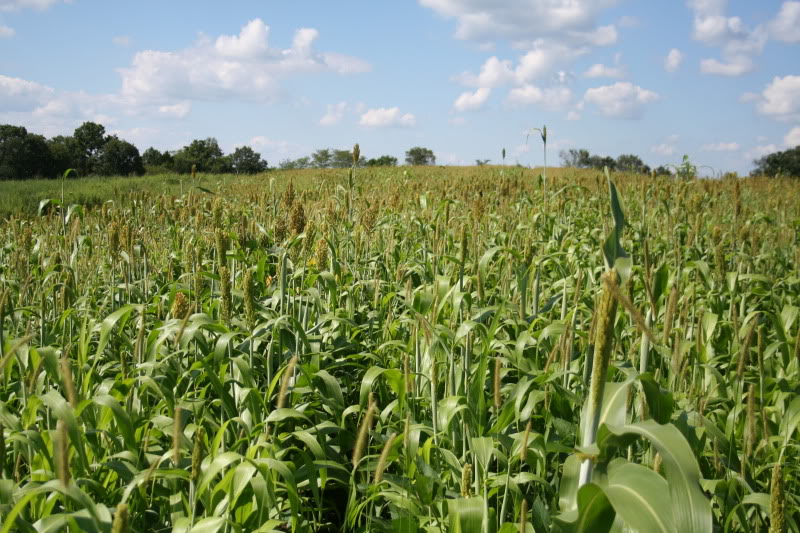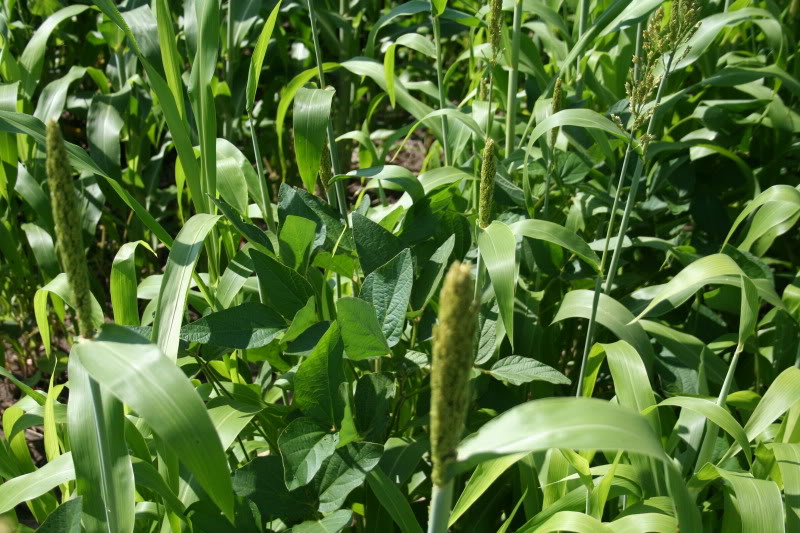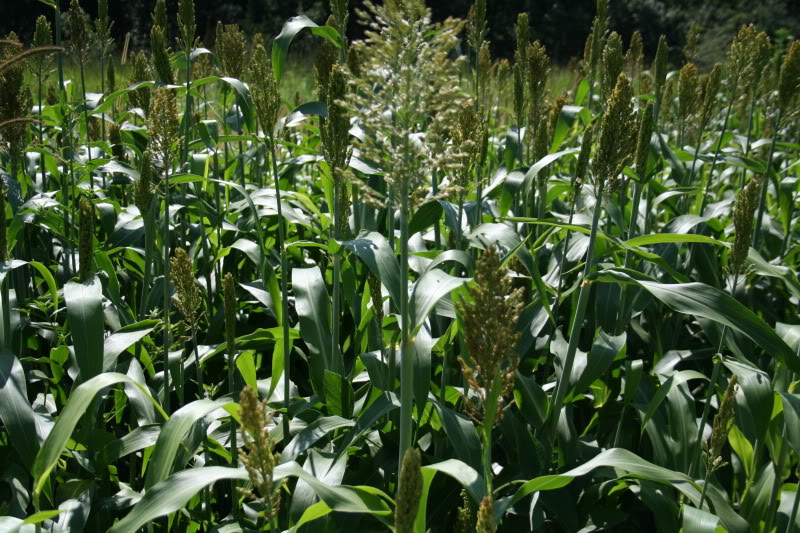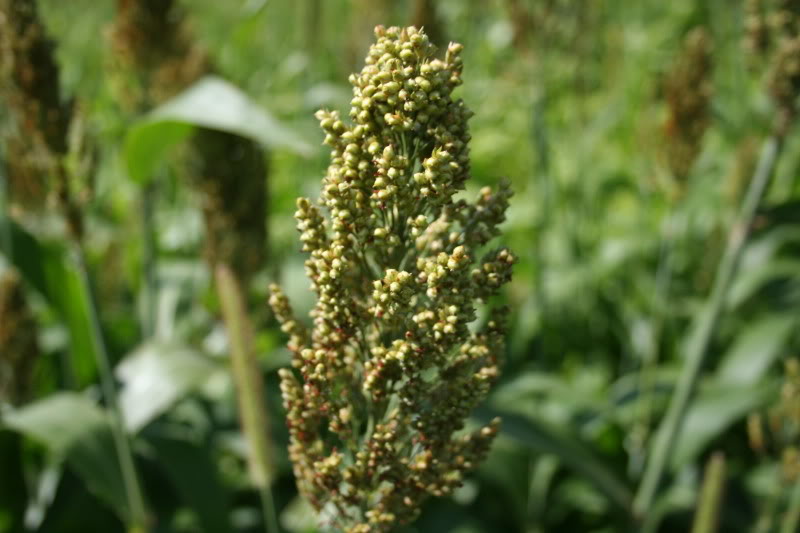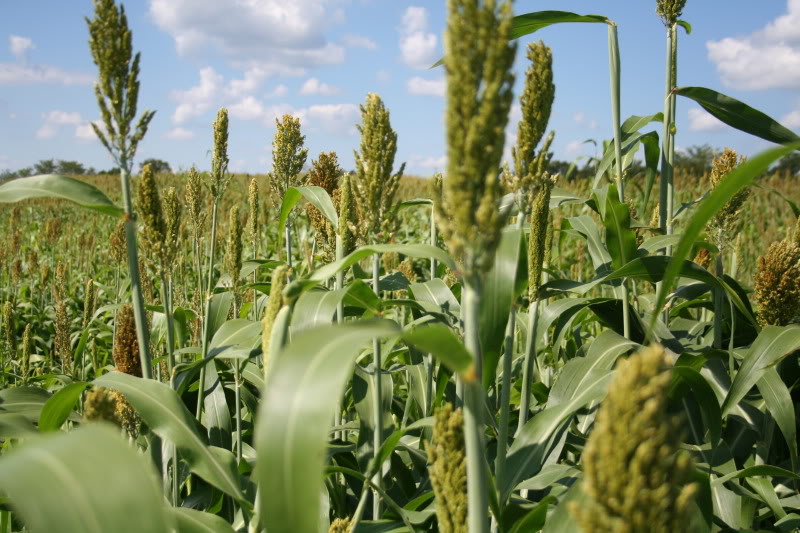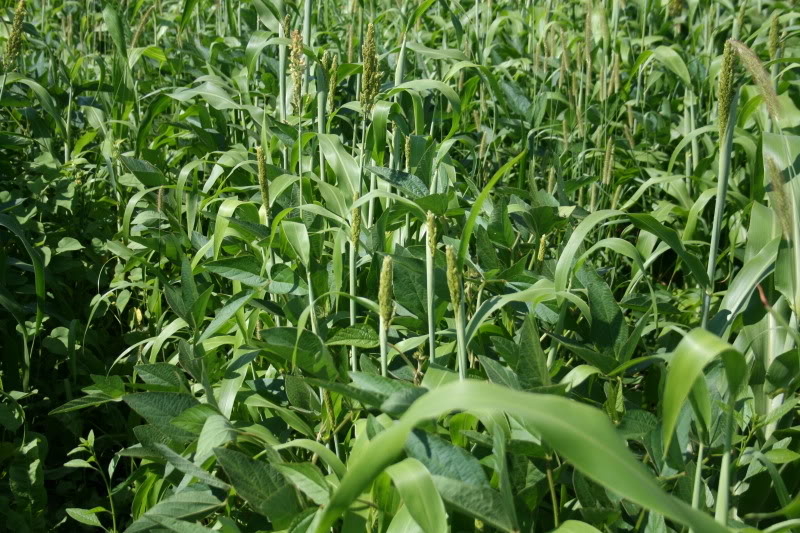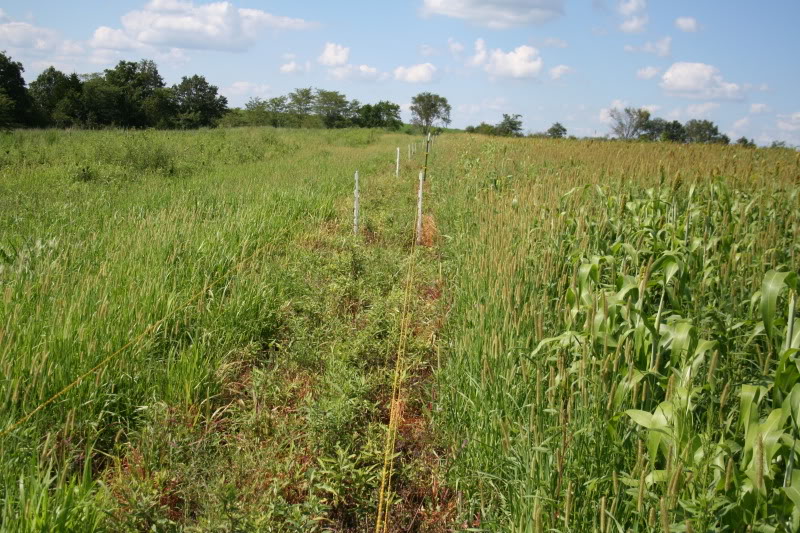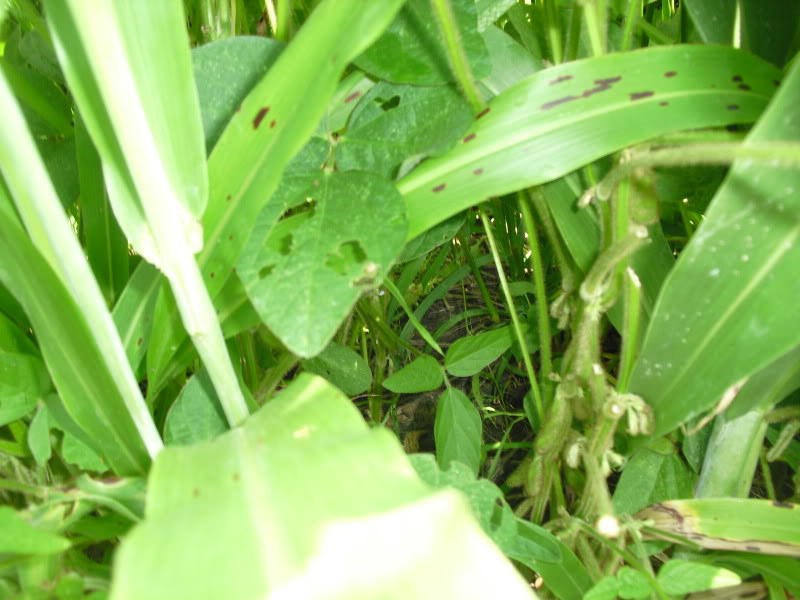We continue to be inundated with almost daily heavy rainfall here in SE Iowa and it is honestly quite rare to go a full 24 hours without at least a 1/2" of rain! Last week we averaged an inch a day on already saturated soils and flooded fields, all of which is drowning crops in the fields and pushing nitrogen beyond the root zone. Thousands of acres are unplanted and as many more unsprayed creating very difficult situations for farmers here.
Passing by fields of yellow and uneven corn, I know I am blessed to have my milo and beans on reasonably well drained soil although much of it is still suffering.
Milo/soybean combo at 3 weeks
The WGF milo is better adapted to hot dry weather but most of it is doing well
Now that I have the field fenced the beans are rebounding and handling the wet soils better then the milo
Parts of my field looks like this...drowned out!
You can see the lower leaves of the soybeans are yellow and the milo is spotted
The Dual II Magnum herbicide is keeping the crops clean
and that is even more apparant where I missed a strip!
The rye straw mulch also helps suffucate weeds and in dry years conserves soil moisture
The white clover I disced down is returning which is another neat aspect of adding clover to a fall rye planting!
I find it interesting how over the past 15 years deer have become so adapted to feeding in this field via well worn routes that they have completely ignored a smaller second field around the corner. These beans lead to that field and though unfenced deer have not ravaged them as of yet.
They walk right thru these beans to reach their usual feeding area rather then forage on these on the way...weird!
I finally got the fence completed although the single fence kept all but a couple deer out
The three wire, 2 fence project is a hybrid so to speak of fencing supplies from various suppliers
I mowed my falcata alfalfa tight to the ground and installed the fence in it, hoping the strip of falcata will help act as a buffer as well
The fence was actually shorted in an area that didn't get mowed so I used the weed whacker to clean everything up and once the grasses start to regrow I'll clean up the alfalfa with clethodim in a backpack sprayer.
Our forecast includes daily heavy rains for the forseeable future but hot weather this time of year will at least help dry the surface of saturated soils.
I'm also nothing less then ecstatic that the fence appears for now at least to be working....a field of standing soybeans in November is doggone hard to beat! :way:




